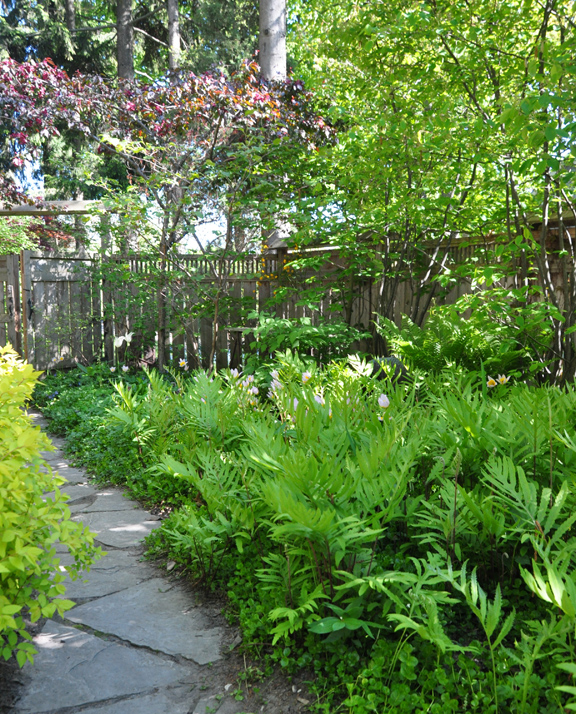from Transitory Gardens. Uprooted Lives by Diane Balmori and Margaret Morton
Elderberry, Black Lace Sambucus
I struggled a little with this news. How could anyone leave behind a garden they had laboured so long to create, I wondered?
Malva sylvestris 'Zebrina'
This is not the only example where the gardener is retiring from a large, high-maintenance, cottage-style garden. I have already shown one such property this spring, and have yet another which I hope to post in the coming weeks. Baby boomers are getting older and it is unclear if there is a generation of younger gardeners to replace them. All this has me wondering if large, cottage-style gardens might become a thing of the past.In Jane's case, she wants less work and more time to lavish on her twelve garden children. She hasn't given up gardening, she's just planning to do so on a much smaller scale. The garden Jane named "Carpe Diem" will go to a new owner, who may or may not be a gardener with enough time, energy and enthusiasm to maintain the extensive flowerbeds. Chances are a large part of Carpe Diem may be grassed over.
I love the mosaic that makes use of pieces of broken china and decorative tiles.
The cutting garden.
Annual poppies.
How prophetic that choice of name seems given the garden's uncertain future!
Gardens are indeed transitory which always seems to be at odds with our love of permanence and stability. We like to build things that last and create things that out live us. Without a caretaker, a garden will fill with weeds as Mother Nature reassumes command.
Is devoting yourself to making a garden a waste of time then?
Some might think so, but I doubt very much that Jane would agree with them.
Centranthus ruber 'Albus'
An old tub filled with hosta.
Hidden just behind the stone patio is a little pond.
There are a number of these piles of stones known as "cairns" in Jane's garden. In ancient times, a cairn was a landmark or trail marker.
Campanula and pink peonies.
Gardening is not a whole lot different from other creative pursuits.
When a writer finishes a novel, he or she sends it to a publisher with fingers crossed and then moves on to write new stories. Same thing with artists. They create a painting and move on to the next challenge.
That is exactly what I think Jane has done. She's acted on her ideas and given Carpe Diem her heart and soul for almost twenty years. Her work is finished. The garden has given her all it can give and now she's ready to move on.
The rose and iris garden at the front of the house.
Do you see the bird nest? It is tucked discreetly in among the stonecrop sedum.
Rosa glauca has marvellous grey foliage.
Believe it or not, Rosa glauca is a rose you grow for the foliage. (To see the full shrub scroll back two pictures.)
Rosa glauca is a species shrub rose that has glaucous, grey-green foliage. The roses are single five petaled flowers that are slightly fragrant. The tall plum rose canes have few thorns. This rose likes rich, well-drained soil. Full sun. Height: 6-8 ft Spread: 5-7 ft. USDA zones 2-8.
There is a generous deck that runs from the back door around to the side of the house.
The shaded patio at the back of the farmhouse.
A hanging basket–literately!
I am sure you will join me in wishing Jane all the best in her new endeavours. Gardening is a transferable skill, so I am sure her new smaller garden will be terrific in its own right.
For the rest of us, her garden is a good reminder that nothing is forever. So make the most of your time in the garden this summer and enjoy every moment!
For the rest of us, her garden is a good reminder that nothing is forever. So make the most of your time in the garden this summer and enjoy every moment!

























































